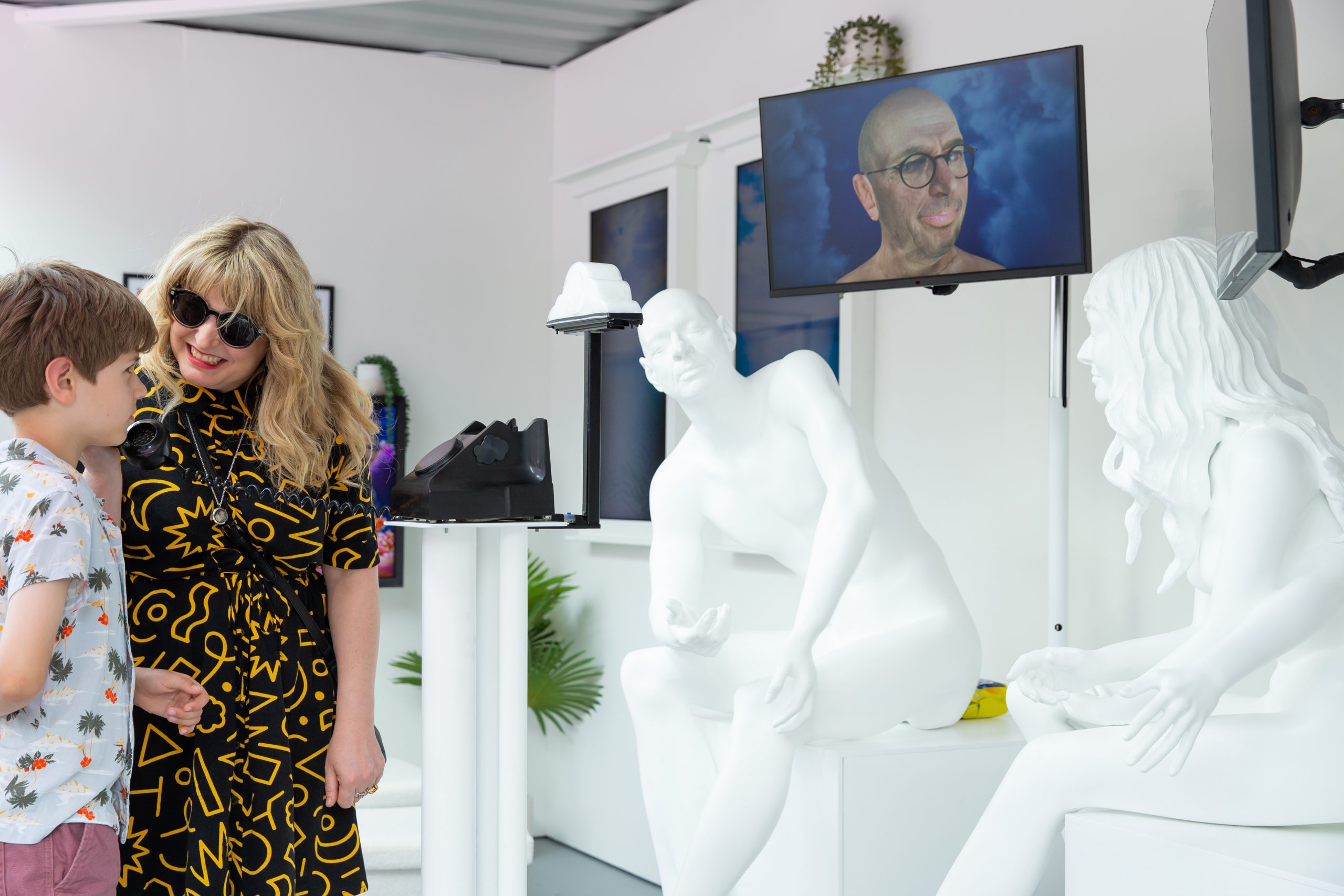Simulated Selves by art-science practitioners Svenja Kratz and Bill Hart is a meta exploration of self, artificial intelligence (AI) and creativity. Sitting in a room of AI-generated imagery, two AI-generated human forms are engaged in a conversation. The digital avatars on each figure portray each artist’s likeness and their dialogue philosophically questions machine versus human forms of intelligence.
This is a speculative artwork that responds to recent AI developments both technically and conceptually. It is now possible to create a ‘simulated self’, an AI that can operate indefinitely and independently of the original human model. The artists playfully explore their own autonomous digital doppelgangers and invite viewers into this conversation. The two sculptural mannequins feature details cast from bodies and while referencing the likeness of the artists, the sculptures are intended to look awkward. This design references the current limitations and quirks of generative AI systems which often have difficulty accurately representing fine body features like hands and limbs.
The digital avatars are developed from the scanned likenesses of Kratz and Hart, and the system data includes personality profile, speech style, mannerisms and archived philosophical perspectives. The installation actively considers philosophical questions regarding what fundamentally constitutes the human self. The AI doppelgangers discuss whether it is possible to create an AI archive of the self that can act as a substitute in the absence of the ‘real’ person.
This speculative conversation reflects contemporary philosophical enquiry around the role of AI in society, and the vast digital footprints of our online selves. They converse on the nature of being and existence and reflect on the differences between human and machine intelligence and creativity.
You will also have the opportunity to engage in this conversation, by speaking into an anachronistic telephone receiver. Using speech recognition, a tailored response will be prompted, in line with the philosophical focus of the work. A web-based archive accessible via QR code provides insight into the generative AI in the creative development and production of this artwork. This work heralds from the artists’ shared academic experience lecturing on interdisciplinary artistic practice at the University of Tasmania.
Check out the artwork website and archive.
The project was supported by the School of Creative Arts and Media at the University of Tasmania with special thanks to the technical team Nic Randall, Murray Antill and Peter Stannard.
About the Creators
SVENJA KRATZ is an artist and researcher working at in the nexus of art, science and technology. She has collaborated with researchers and creative practitioners in diverse fields such as music, architecture, electrical engineering, cell and tissue culture, molecular biology, and biomanufacturing. The resulting creative works explore the complexity of living systems and highlight the philosophical and ethical implications of engineered life and technologically-facilitated immortality.
BILL HART is a creative practitioner whose work explores art, science, philosophy and what it means to be human through tinkering with technology. His love of science fiction led him to his first career in maths and physics. He later became interested in art and spent the next 25 years learning and teaching others digital technology at the Tasmanian School of Art. His art practice has included video, animation, large format digital prints, software and generative art, media installation, digital drawings and drawing and writing machines.
More Information






